Scotch whiskies can definitely be expensive – more so than other types of whiskey like bourbon or Irish whiskey that in general, don’t tend to be as pricy. I wanted to find out why this was, and after doing some research I found eleven reasons why some Scotch whiskies are so expensive.
1. They’re Made from High Quality Ingredients
The first reason why some Scotch whiskies are expensive is because they’re made from high-quality ingredients, which is necessary because low quality ingredients will negatively impact a whisky’s taste.
Scotch whisky is made from four ingredients:
- Grain(s) whose starches are converted into sugars and then alcohol.
- Water to cook the grain and dilute the alcohol.
- Yeast that causes the sugars to be converted into alcohol.
- Barrels whose wood gives Scotch whiskies 70% – 80% of its flavor.
High quality grain means they’re uncracked, clean and sorted so that foreign materials haven’t gotten inside and contaminated them. High quality water means it’s clean and pure for the same reason, and free of iron which reacts with alcohol and turns it bitter. The yeast also has to have as few impurities as possible so that it doesn’t impart any bitterness to the whisky.
As for barrels, high quality can mean a journey of a few years as decades old Oak trees are carefully felled and dried in a way that preserves the character of the wood needed for maturation and ensures its heavy oils don’t spoil the whisky. Finished barrels are toasted or charred so that the whisky can access the flavors in the wood, and sometimes barrels are first seasoned with another spirit so that its flavors can be added to the whisky.
2. They’re Made with More Barley
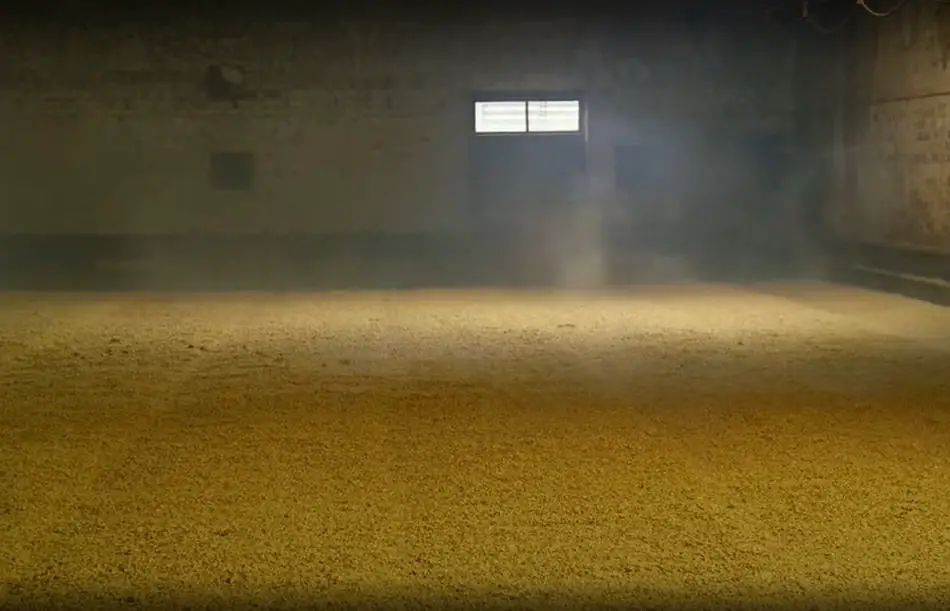
Scotch whiskies are expensive because they’re made with more barley – which is the most expensive of all grains used to make whiskey. Many Scotch whiskies are single malts which means they’re made with only barley, so they’re even more expensive. This is in contrast to say bourbons that are made with more corn which is a cheaper grain.
The reason why Scotch whiskies are made with more barley is because it’s the most widely available grain in Scotland – where Scotch is made. And barley is the most widely available grain in Scotland because it grows better in a mild, winter climate like that of Scotland, than in a hot and moist climate like that of … almost anywhere else.
(Similarly, the reason why bourbons are made with more corn is because it’s the most widely available grain in Kentucky – where most bourbons are made. And corn is the most widely available grain in Kentucky because it grows best in a warm and sunny climate with intermittent, moderate rain.)
Not only is barley the most expensive grain used to make whiskey, it’s also the most expensive grain to process. That’s because other grains can be cooked to access the starches that will be converted in sugars and then alcohol, but barley has to be malted.
Malting is where barley is soaked in warm water and then spread out on the floor of the malting house and left to partially sprout or germinate. When the barley grain opens the germination process is stopped by spreading the barley on the grids of a kiln to dry with hot air from below.
As you can see, the malting process is lengthy and involved and certainly costs more than if the barley were simply cooked. Which is why Scotch whiskies being made from more barley means two additional expenses.
3. They’re Made from A Better Cut of Distillate
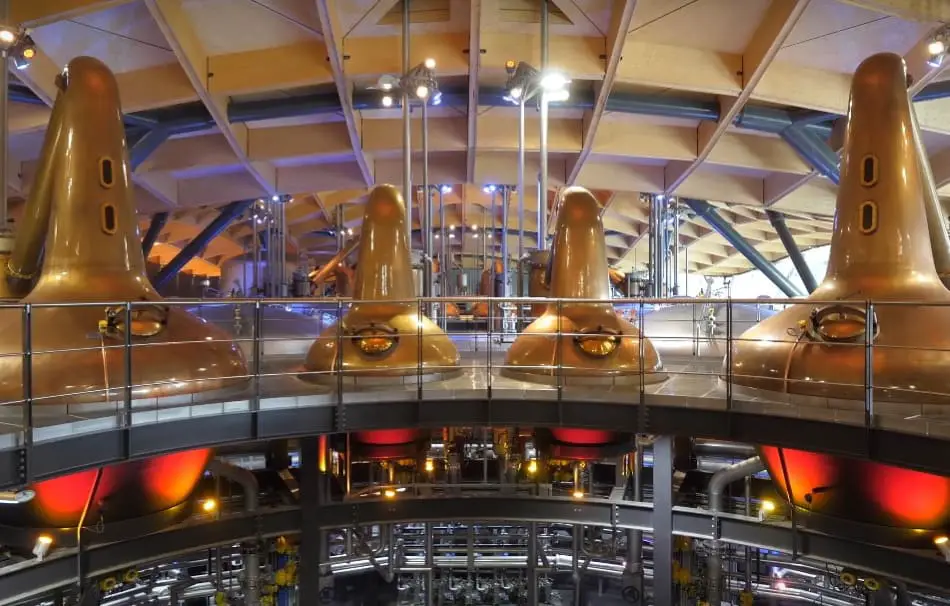
Scotch whiskies are also expensive because they’re made from a better cut of distillate.
When Scotch whisky is distilled, alcohol from the beginning and end of the run is not used because it contains undesirable (and sometimes dangerous) elements that give the whisky an unpleasant flavor. The closer the alcohol is to the middle or heart of the run the better it is, and a distillery will therefore cut the distillate to collect more from the heart of the run and less from the beginning or end.
A narrower cut is obviously better as it removes more of the unwanted elements that give the whisky an unpleasant flavor, but it also means that less distillate is used which increases the cost of production. A wider cut would decrease the cost of production by using more distillate, but it would also mean that the whisky would retain more of the unwanted elements.
A narrow cut of distillate is enough to increase the price of any Scotch whisky but more so single malt Scotch. That’s because single malt Scotches are distilled in pot stills which produces distillate in batches. This means that the distillate has to be cut for every run so even more Scotch is left unused and the cost of production is even higher.
4. They’re Stored for A Long Period of Time
One of the biggest reasons why Scotch whiskies are so expensive is because they’re matured for a long period of time.
Scotch is matured in barrels so that it can pick up flavors from its wood. This happens because during the time the whisky is stored, changes in temperature cause the barrels to expand and contract and the liquid to seep in and out of the wood, where it picks up flavors in the process.
The longer Scotch whisky is matured the more flavors it will pick up, but this also makes the whisky much more expensive. After all, it costs a lot of money to have a product that you can’t use for years, and even more to maintain storage facilities that provide the proper environment in which Scotch can age well.
All Scotch whiskies have to be aged for a minimum of three years, but many are aged for 12, 15, 18, 21 years or even longer – especially single malt Scotches, and each year of maturation makes the whisky more expensive. This is in contrast to bourbon that’s often only aged for 5 – 10 years.
Part of the reason why Scotch whiskies are aged for so much longer than bourbon is because the year-round, mild, temperate climate of Scotland means fewer changes in temperature per year and less times the whisky seeps in and out of the wood of the barrel, so the whisky ages relatively slowly.
However, bourbons aging in Kentucky with seasonal fluctuations that include heat in the summer, mature relatively quickly in a climate that accelerates the aging process.
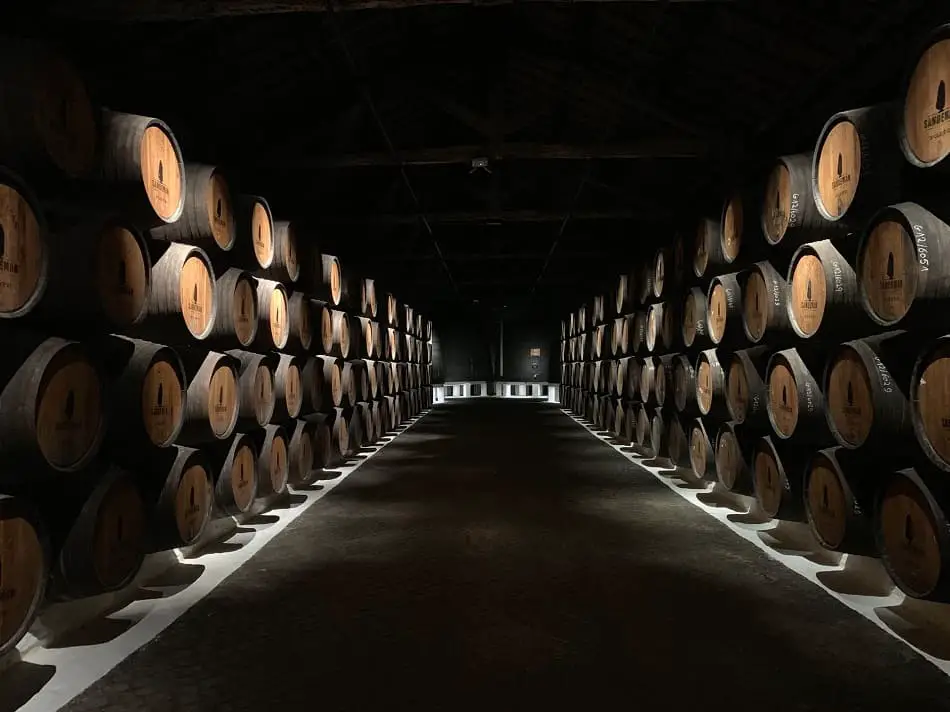
5. Scotch Is Lost During the Maturation Process
Another big reason why Scotch whiskies are so expensive is because a lot of it is lost during the maturation process.
That’s because wood is porous so whisky can easily evaporate from the barrel. In fact, anywhere from 2% – 10% of the whisky in the barrel (size, method of storage and climate of location dependent) evaporates per year.
And the longer a whisky spends maturing in the barrel the more will be lost to evaporation. Scotch whiskies matured for 10 years will have lost 18% – 20% of their volume to evaporation and Scotch whiskies matured for 25 years will have lost 30% – 40% of their volume to evaporation!
This loss of Scotch whisky is called by the cute sounding name, ‘the angels share’ but that doesn’t stop it from causing Scotch whiskies to be much more expensive.
Of course, as mentioned, all Scotch has to be matured for at least three years which means a significant loss of whisky from the barrel, but many are aged for much longer which means a substantial loss of whisky from the barrel.
6. They Have a High Alcohol Content Level
People prefer Scotch with a higher alcohol content level or ABV because alcohol carries flavor compounds, so the whisky will have more intense and concentrated flavors. However, a higher ABV also means that more distillate was used, which makes the whisky cost that much more.
Scotch is distilled to no more than 94.8%ABV but before being placed into the barrels for maturation it’s diluted with water to closer to 63.5%ABV. After maturation it’s usually diluted once again and bottled at a minimum of 40%ABV, but Scotch can be anywhere up to 68%ABV.
Obviously, the higher the ABV and the less the whisky from a given barrel is diluted the fewer the number of bottles that can be filled from it – which makes each one cost that much more.
This applies to all Scotches, but single malt Scotches are more likely to be bottled at higher ABVs (43% and 46% are very common). After all, they’re made from barley, distilled in a pot still and matured for many years to give them lots of flavors. It therefore makes sense to bottle them at a higher ABV so as not to dilute them.
7. The Government Collects a Tax on Alcohol
Another reason why Scotch whiskies are so expensive is because the government collects a tax on alcohol. The more alcohol in your bottle the more tax is collected, and the higher the price of your whisky.
This applies to all Scotch whisky as its minimum ABV is, as mentioned, 40%, which is significantly higher than many other alcoholic drinks like wine that’s around 16%ABV and beer that’s around 6%ABV, which therefore won’t have anywhere near as high a tax. The following table shows the ABV ranges for common alcoholic drinks:
| Alcoholic Drink | ABV Range |
|---|---|
| Scotch whisky | 40% – 68% |
| Beer | 4% – 6% |
| Wine | 5.5% – 16% |
| Liqueurs | 15.5% – 55% |
| Tequila | 32% – 60% |
| Brandy | 35% – 60% |
| Vodka | 35% – 95% |
As you can see, Scotch whisky is one of the strongest alcoholic drinks available, so it will be highly taxed.
And since single malt Scotches are, as mentioned, more likely to have a higher ABV than the minimum – most commonly 43% or 46%, they will be taxed even more and therefore be even more expensive.
8. They’re Imported from Scotland
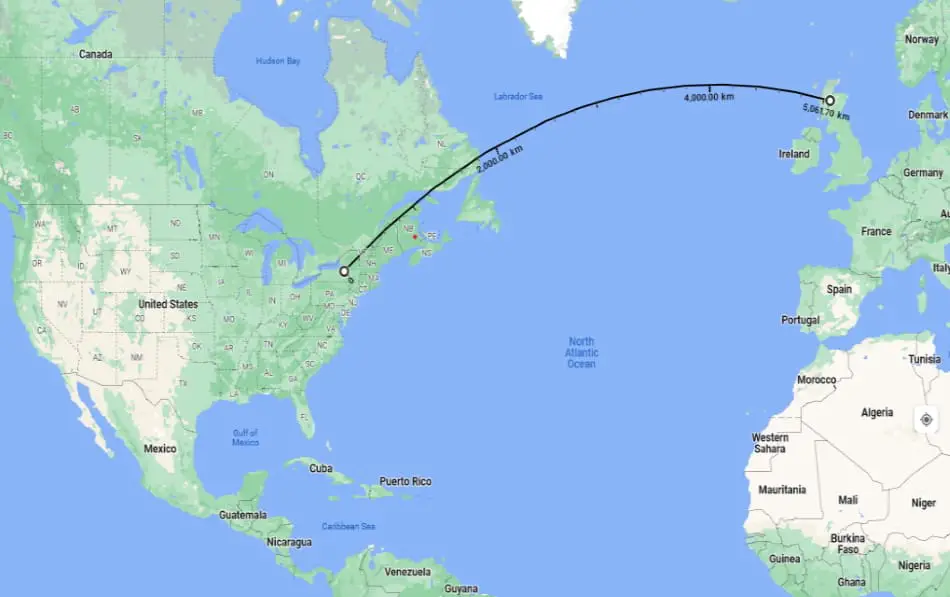
There are many criteria a whisky has to meet to be considered a Scotch, and one of the most important is that it’s made in Scotland. This means that any bottle of Scotch whisky bought in the United States was imported, which is another reason why they’re so expensive.
Shipping charges alone are significant when you consider that importing Scotch means bringing it more than four thousand miles all the way from Scotland. And since shipping across the Atlantic Ocean is often done by plane because it’s faster, safer and more reliable than cargo ship, it costs even more. Compare this to transportation costs for bourbon that’s shipped shorter distances across the country by railroad or truck.
And once Scotch arrives in the United States there are additional taxes, tariffs and fees that need to be paid which all drive up the price of the whisky. All together the extra expense of importing Scotch, makes the same bottle significantly more expensive in the United States than it is in Scotland, as you can see from some examples in the following table:
| Price in the US | Price in Scotland | |
|---|---|---|
| Johnnie Walker Black Label 12 Year Old | $40 | $27 |
| The Glenlivet 12 Year Old | $50 | $35 |
| Laphroaig 10 Year Old | $65 | $40 |
| The Balvenie Doublewood 12 Year Old | $75 | $45 |
| Macallan 12 Year Old Double Cask | $80 | $70 |
9. They’re Well Branded and Marketed
Some Scotches are expensive simply because they’re well branded and marketed. This means that part of the higher price is not a result of the higher production costs necessary to produce a better product, but rather the result of a wide-spread perception of extra value due to nothing more than good branding and marketing.
Brands that make exceptional quality Scotch whisky for years become well-established and trusted, and an excellent reputation along with a huge PR apparatus that spends a fortune in branding and marketing, can turn a brand’s Scotch into a premium product that’s associated with luxury and success, and in some parts of the world, a status symbol.
Such branding and marketing is helped by the fact that there’s already a widespread perception that Scotch whiskies are of high quality. It makes sense when you think about it. After all, Scotland has been making whisky for over 500 years, and many of their distilleries are hundreds of years old and use techniques and methods they’ve been improving upon and perfecting over the centuries they’ve been operating.
It’s certainly reasonable to expect that they should be able to produce something good by now.
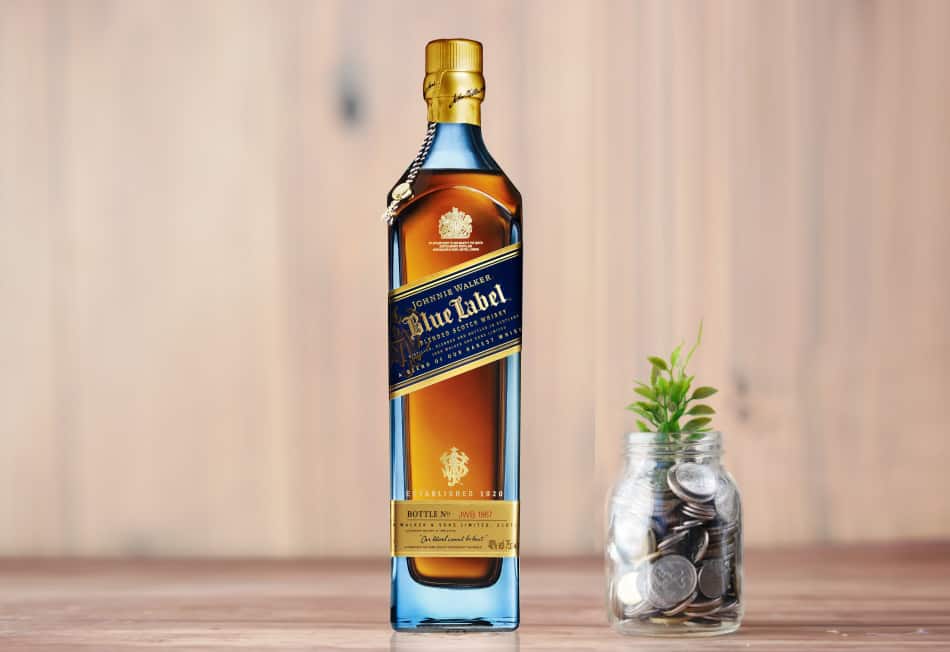
10. They’re In High Demand
One of the most ironic reasons why Scotch whiskies are expensive is because of a recent increase in demand and consequently the lowering of its supply.
Scotch has become increasingly popular over the last few years, with more bottles being sold than ever before and continuous growth forecast into the near future. While part of this growth is due to an increase in demand in North America and Europe, it’s also being driven by the demand from emerging and fast-growing markets, especially in Asia Pacific (source ).
).
Unfortunately, when it comes to Scotch whisky, because it takes so long to make it’s not easy for the supply to keep up with the demand. Next year’s supply of Scotch was determined years ago when it was barreled, and any increase in production today won’t affect supplies for years or even decades to come.
Where this has become a big problem, distilleries have responded in one of two ways. They have either lowered the ABVs of the in-demand expressions so they can fill more bottles than before, or they have increased the prices of the bottles they do have. Which is why some Scotch whiskies are not only expensive, they’re also increasingly expensive.
11. They’re Rare And / Or Valuable
Some Scotch whiskies are more than just expensive – they’re expensively expensive. Or even more expensive than that – we’re talking hundreds of thousands of dollars and sometimes millions. That’s because they’re rare or valuable.
There are a lot of rare Scotch whiskies because distilleries are constantly experimenting with new expressions and creating limited editions to commemorate people, places or events important to them. Any that are very well received will instantly become rare because the demand will far exceed the supply, especially if the distillery is uninterested or even unable to produce further bottles.
There are a lot of valuable Scotch whiskies too, because a 250-year-old distillery that routinely ages whisky for decades is bound to stash away some of its stock to appreciate in value. That’s why there are many 50-year-old Scotch whiskies, some of which have been sold for over $100,000. And why there are collections of such Scotch whiskies that together have been sold for close to $1 million.
And of course, in an effort to add even more value to Scotch whiskies, it was inevitable that someone would commission a famous artist to hand-paint a bottle and sell it for $1.5 million or put their Scotch whisky in a white gold decanter inlaid with diamonds and rubies and sell it for $6 million.
For more information about these and other similar examples, see the more detailed article I wrote about the most expensive Scotch whiskies, which you can find here.

